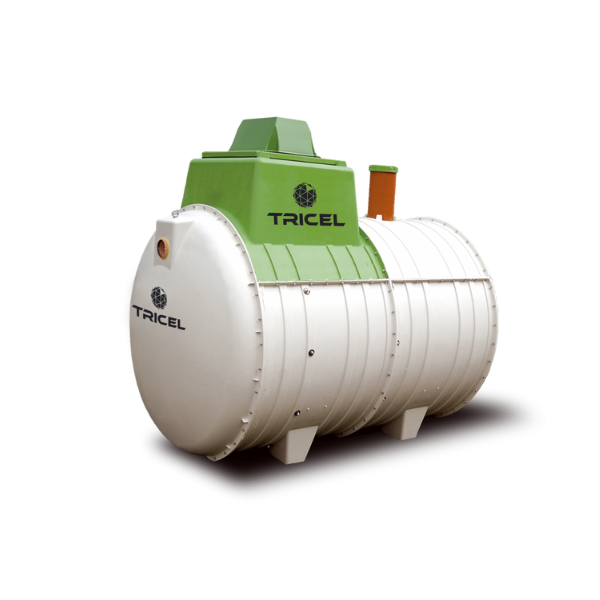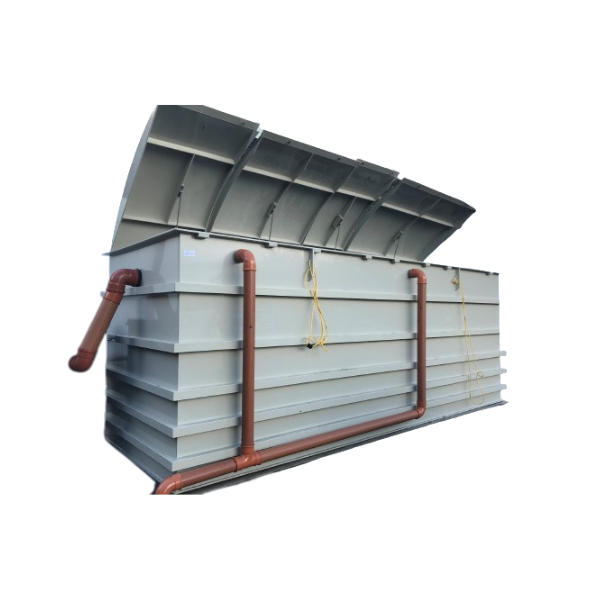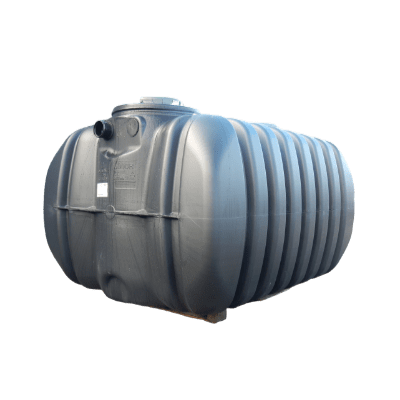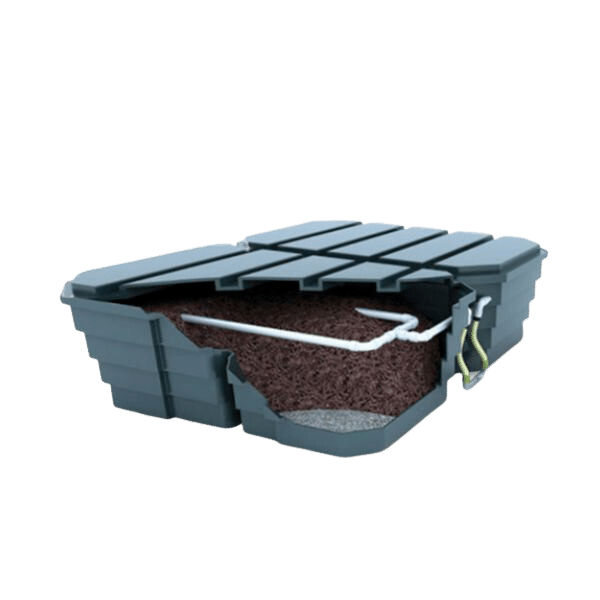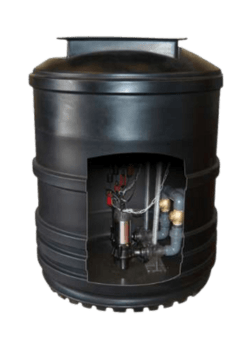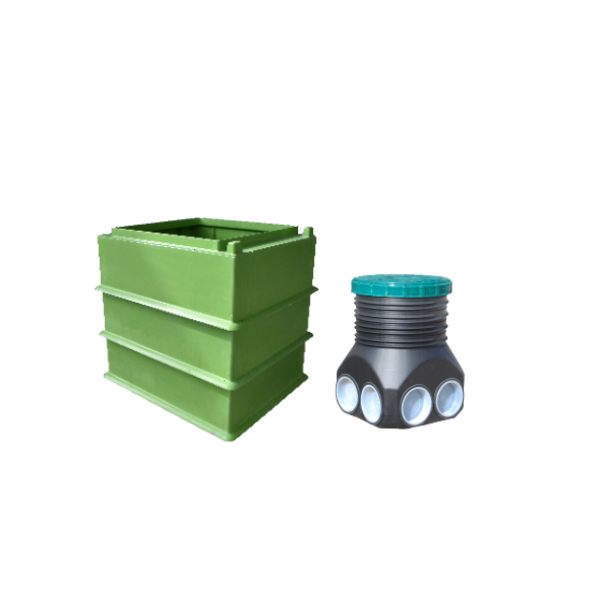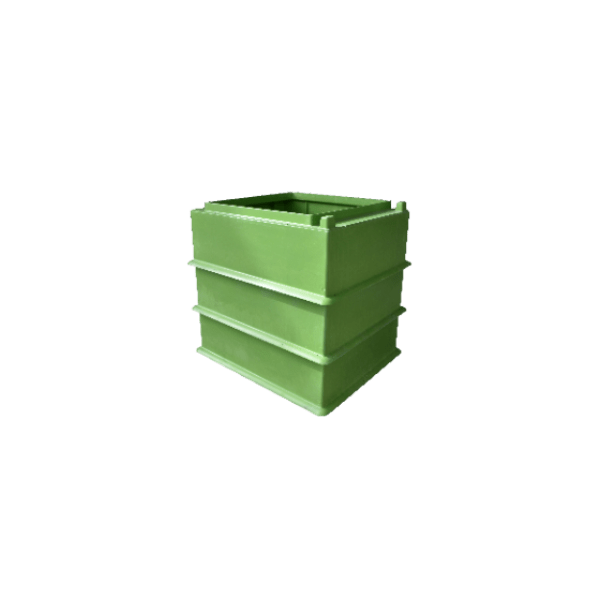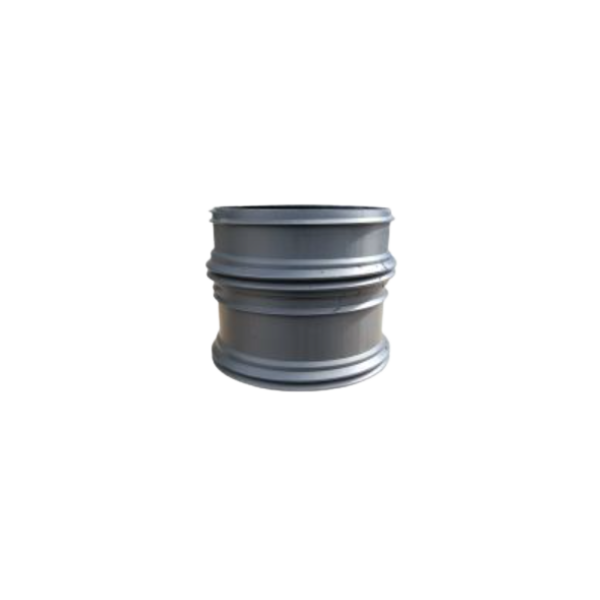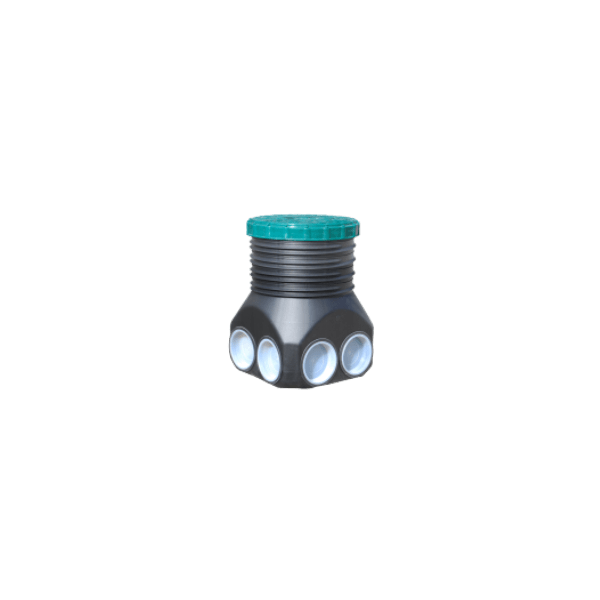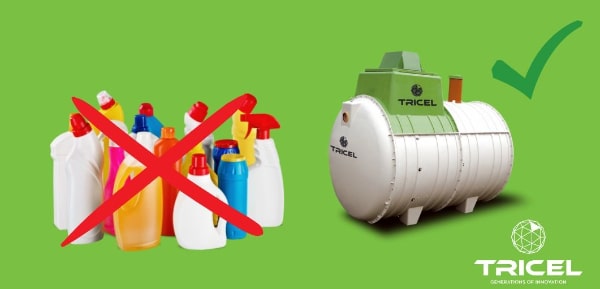SEWAGE TREATMENT
Sewage Treatment Guidelines
Guidelines
To begin with the sewage treatment guidelines for homeowners, we gather some information about Tricel sewage treatment plants.
The Tricel Novo is a submerged aeration plant. This type of plant uses a simple proven technology which treats the wastewater with natural micro-organisms that are sustained in the plant with air given superior treatment results. The micro-organisms remove the pollutants from wastewater.
Micro-organisms need favorable conditions to grow and breed so that work to their optimum. Therefore, it’s important that end user uses caution on the substances entering the plant.
If the micro-organisms are accidentally destroyed due to lack of food or oxygen, they will repopulate in 3-6 weeks. During this time, there may be a slight odor from the plant as it cannot work to its full potential until the micro-organism repopulate. To help ensure the micro-organisms are not destroyed, follow the recommendations below.
Follow our sewage treatment guidelines to get the most out of your sewage treatment plant.
If you have any questions, feel free to call us
Sewage treatment guidelines for homeowners – What to do
- Locate the treatment plant in a pedestrian area away from any superimposed loads.
- Ensure the finished ground level is lower than the “max ground level” indicated on the plant.
- Ensure that vents are clear as the plant requires a fresh supply of oxygen.
- Inspect regularly especially in the autumn to ensure vents are free of leaves.
- Inspect the plant regularly and de-sludge using a licensed contractor to ensure it operates to its optimum.
- Carry out regular inspections and yearly maintenance to ensure the plant is operating at the optimum.
- Check regularly that the air blower is working by listening for the gentle ‘hum’ from the plant.
- Maintain a log of inspections, de-sludging and maintenance contracts to record the full-service history of the plant.
Sewage treatment guidelines for homeowners – What not to do
See below a list of what NOT to do
- Allow rainwater, groundwater or large volumes of water such as those from swimming pools, Jacuzzi’s into the wastewater treatment plant. Excessive water will increase the flow rate through the plant not allowing sufficient treatment time and may also flush the micro-organisms out.
-
Dispose of nappies, sanitary towels, baby wipes, cosmetic and cleaning wipes or similar, rags or non-bio-degradable material down the toilet as they block the drains and also cause a malfunction in the plant.
- Overuse bleach and disinfectants. These are safe to use in accordance with the manufacturers’ guidelines and in the minimum necessary concentration.
- Switch off the plant while going on holidays. The plant should operate 24 hours per day, seven days a week. The air blower and the sludge return system maintain the bacteria during a period of low occupancy.
SUBSTANCES TO AVOID
If the micro-organisms die due to ingress of chemicals (or any of the products listed below) into the plant, you will need to desludge and clean the plant to restart the population of micro-organisms.
should not be discharged of into the sinks or drains.
DO NOT:
- Pour neat bleach or disinfectants down the sink or outside drains. Often we do not use them appropriately to treat foul odors from sinks and drains. However, these foul smells can cause a build-up of decaying material or a plumbing problem which should be dealt with using an appropriate method.
- Allow pesticides, paints, thinners, solvents, gardening chemicals or hazardous substances into the plant.
Fats, grease or any oil down the sink or outside drains as these clog the plant. - Dispose of medicines down the sink. Dispose of as per the manufacturer’s instructions.
- Use sink macerators unless the plant is specifically designed to accept this increase of organic load. Sink macerators result in additional maintenance.
- Some everyday products, such as milk, wine, beer can increase the organic load on the plant and you cannot dispose them of down the sink or outside drains.
Troubleshooting
Properly installing, operating and maintaining sewage treatment plants will give many years of trouble-free service.
All plants are fitted with an alarm, and a buzzer will sound to alert of a fault in the air blower and discharge pump. You can mute the buzzer until the problem is fixed. Once you resolve the problem, the alarm will reset automatically and you must turn back on the mute switch. All electrical work shall be carried out by a qualified person.
You can also use organic septic tank maintenance products like the SeaChem products. They design them specifically to give your sewage treatment system a natural boost and replenish the bacteria which grows in your tank to break down effluent. These products will keep your tank healthy and can help reduce odours which can stem from a malfunctioning system. Order now.
Please note:
Before taking any corrective action, always positively identify the real source of the odour. Check if the odour is coming from another outside source such as a storm drain. All wastewater disposal plants vent gases back through soil pipe and out roof vents. When you install them improperly, roof vents can cause odour problems. Traps/U-bends in drains prevent odours from entering the home. To function they must contain water and be sealed correctly.
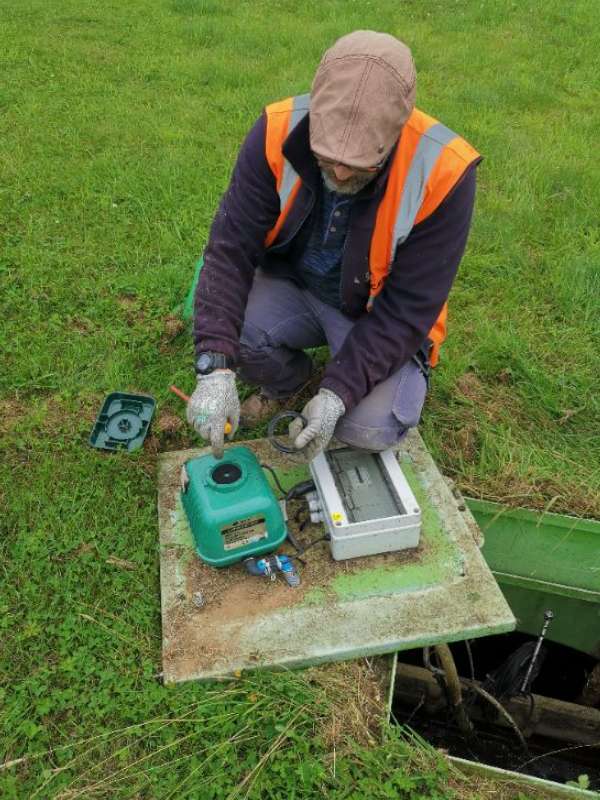
50 YEARS IN BUSINESS
A highly successful multinational corporation with over 50 years’ valuable industry experience
SEWAGE TREATMENT PLANTS
Plants available for all capacities, from 1PE up to 50PE. Free advice on request.
FAST DELIVERY
On-time delivery is a core requirement of our successful business operations
Frequently Asked Questions
Domestic wastewater is all wastewater generated inside the house, including grey water from sinks, showers, baths and sewage from toilets.
Rainwater is not classified as grey water and should be directed to a soakaway.
A wastewater treatment plant treats the wastewater to better quality, typically 20 times cleaner than a septic tank.
Find out how does a septic tank works and how does a sewage treatment plant works.
Once the water is discharged, it must either go to a drainage field of slotted brown sewer pipe or into a running watercourse.
If it is discharged directly into the ground, then it would fail and block up in a very short space of time, and also it would contravene the government’s General Binding Rules for small sewage discharges. More information on this page.
Get in touch
